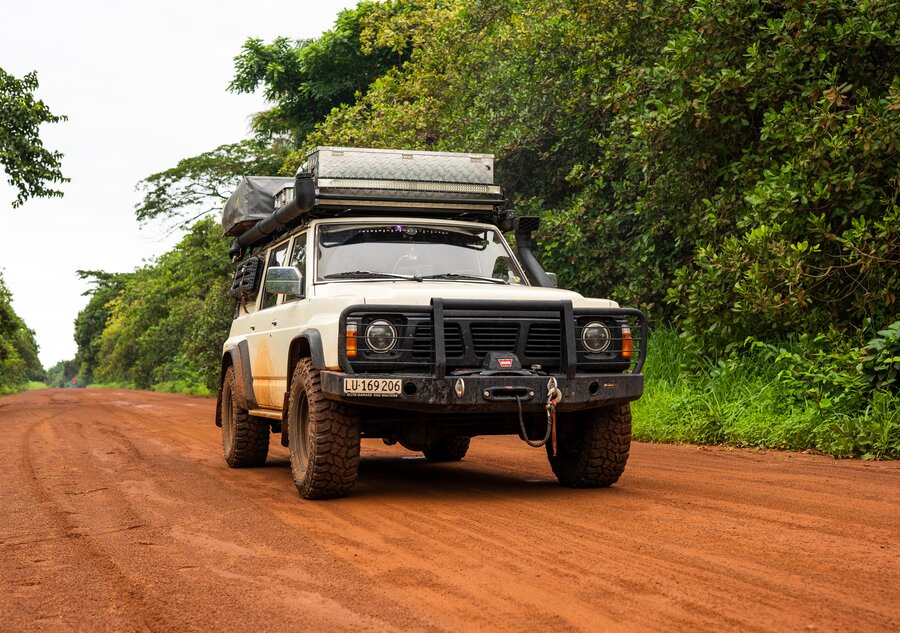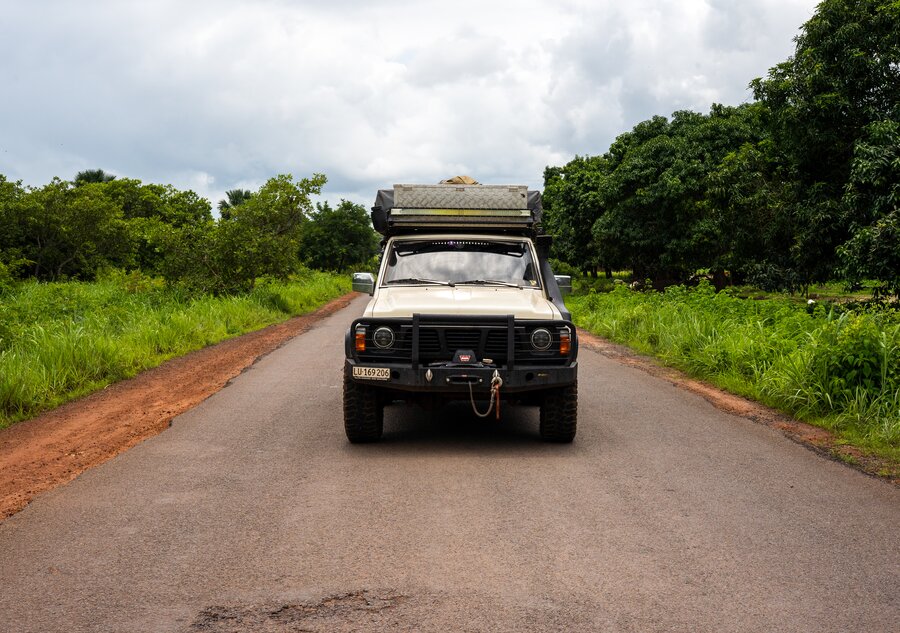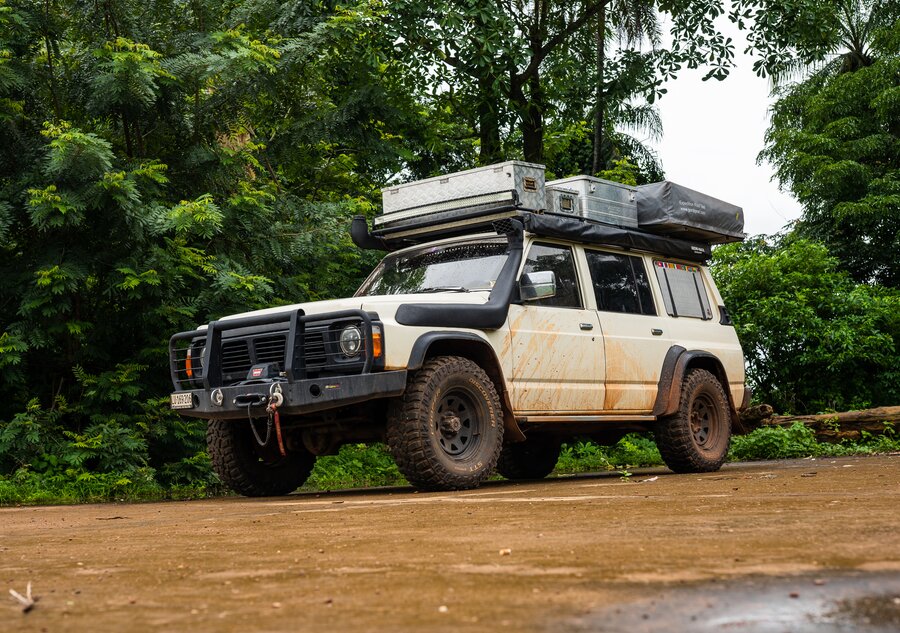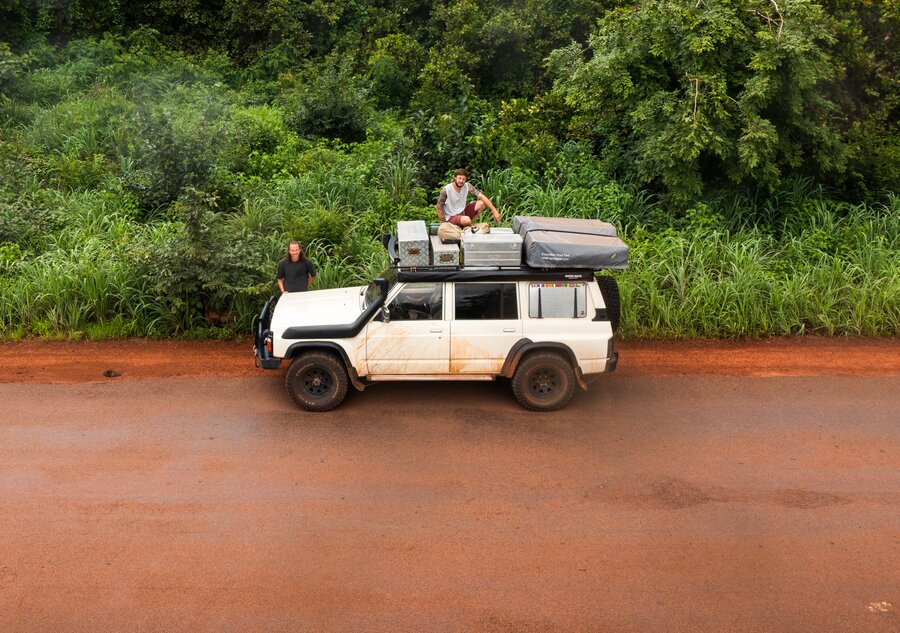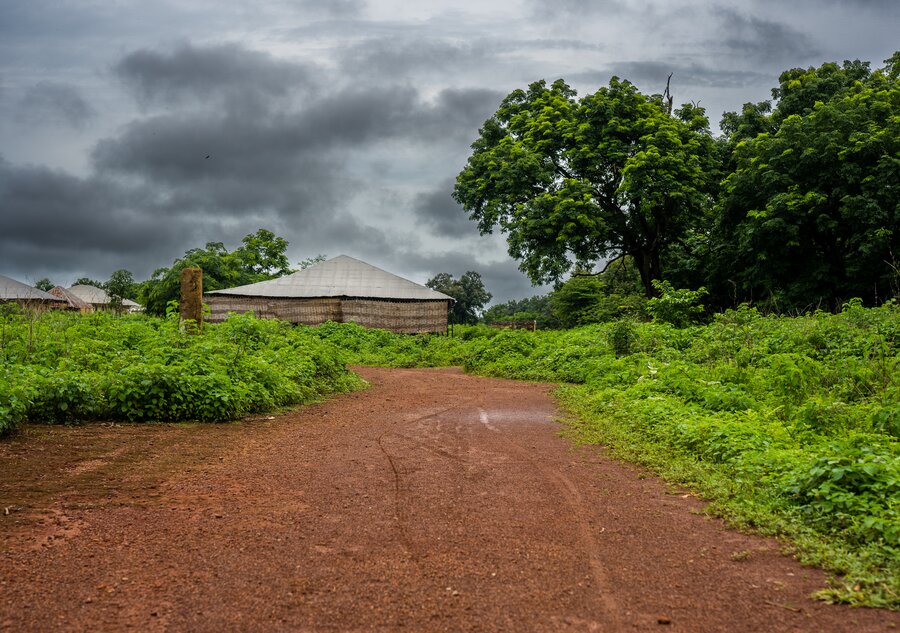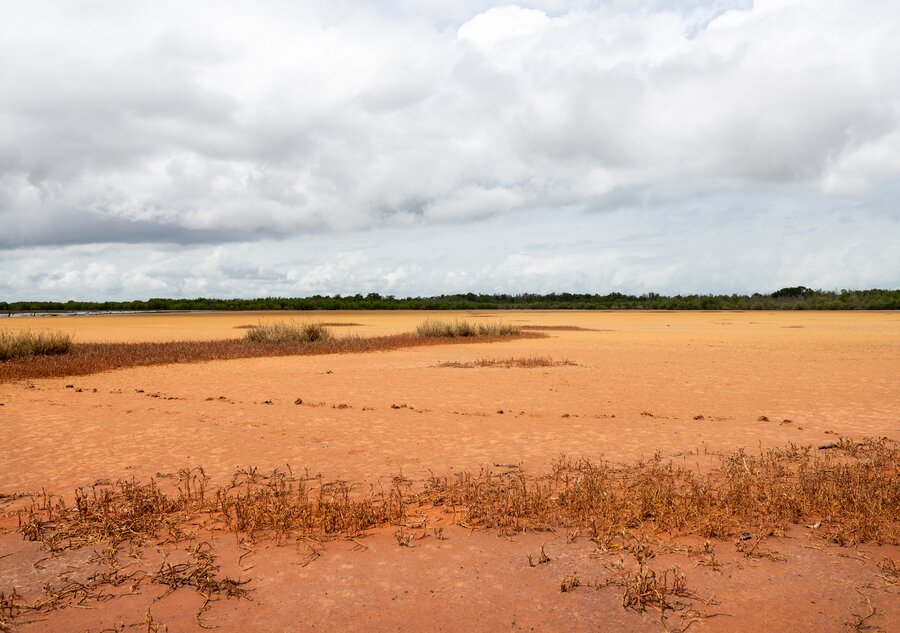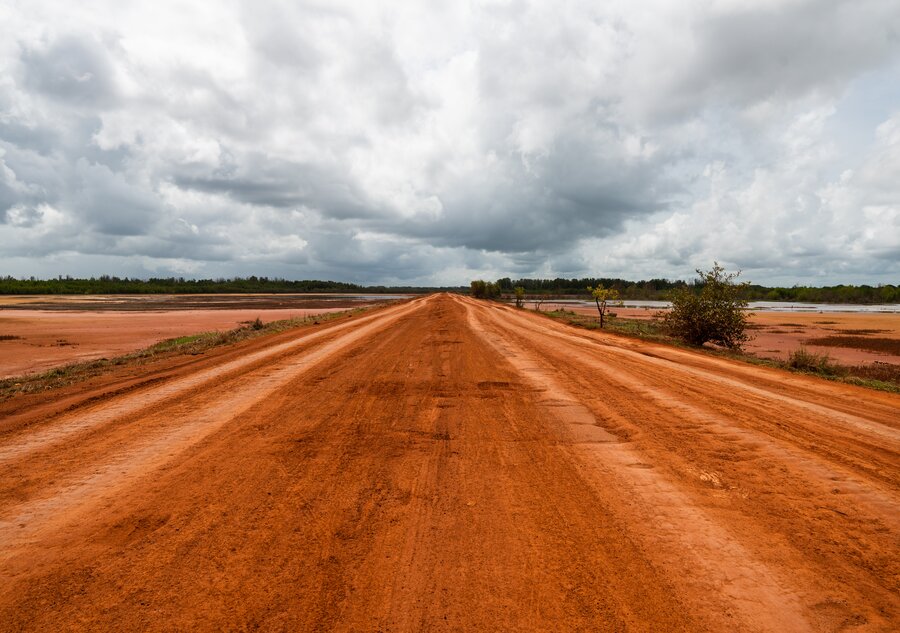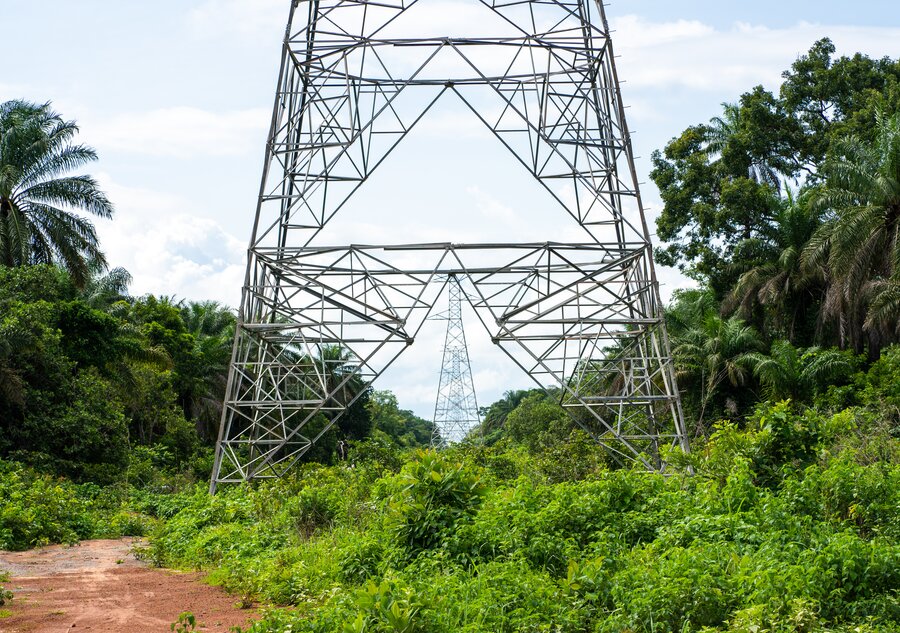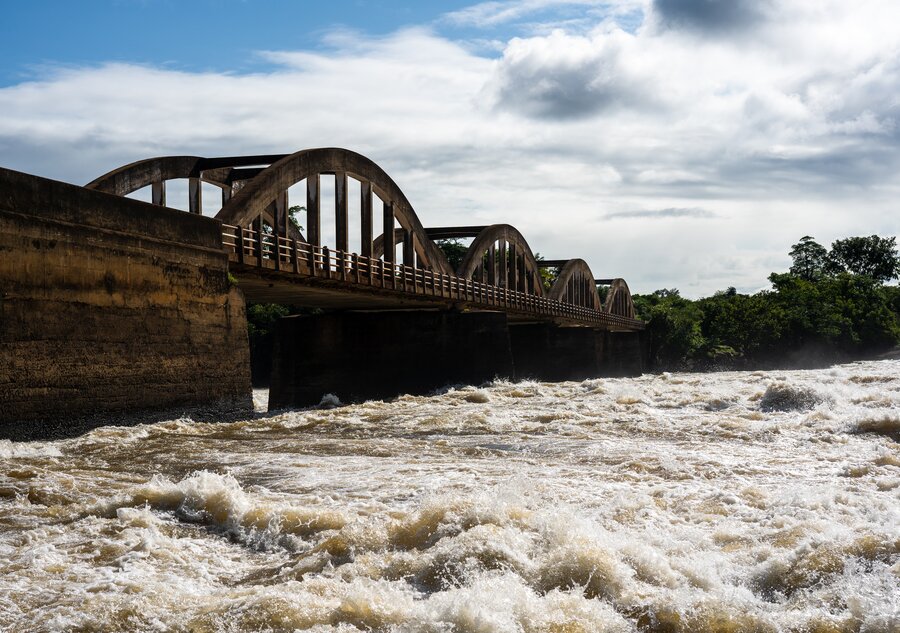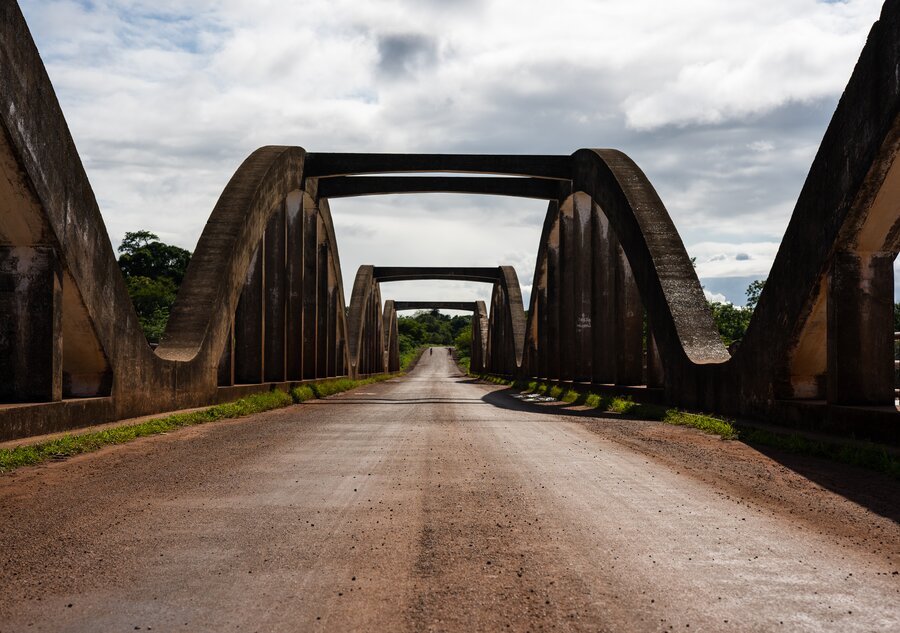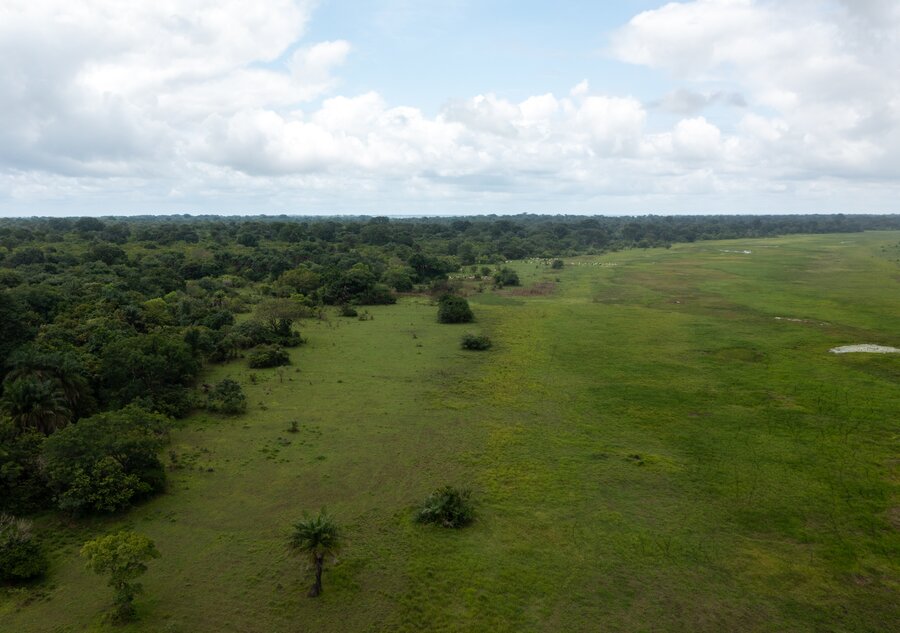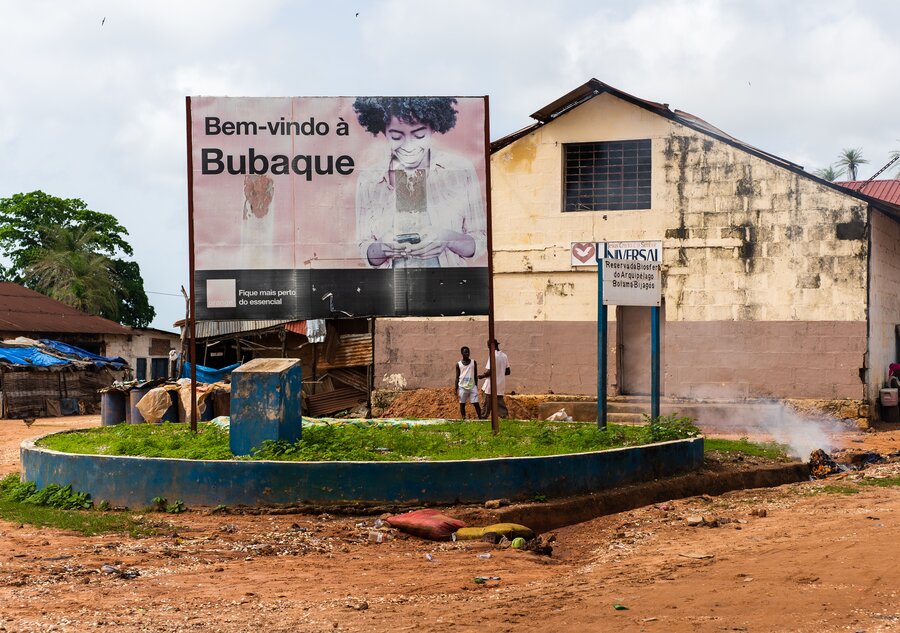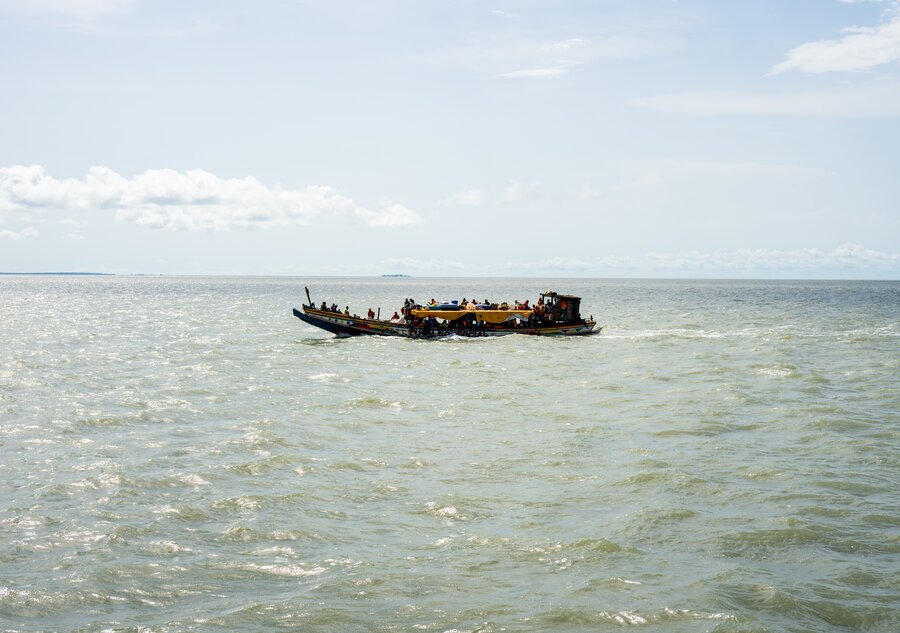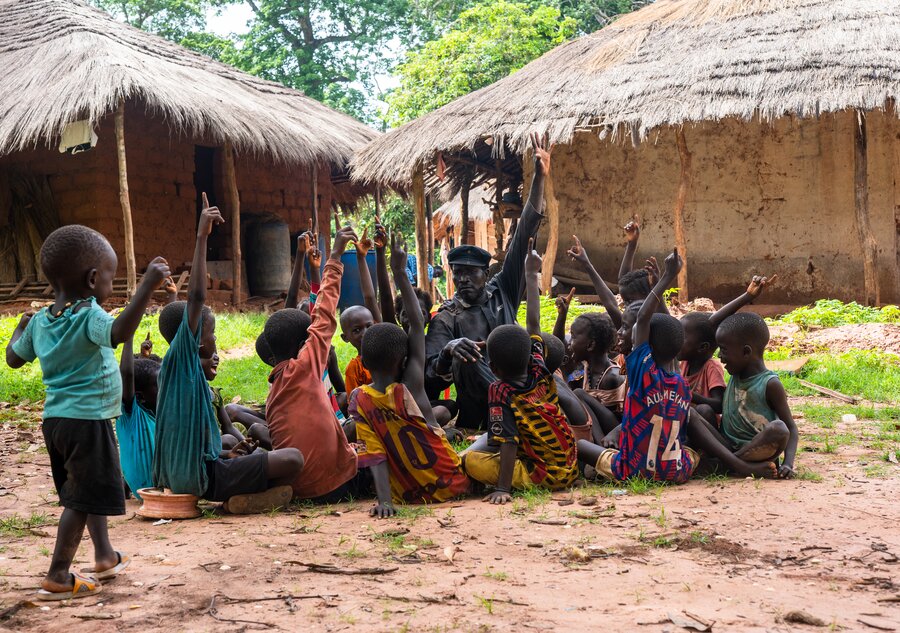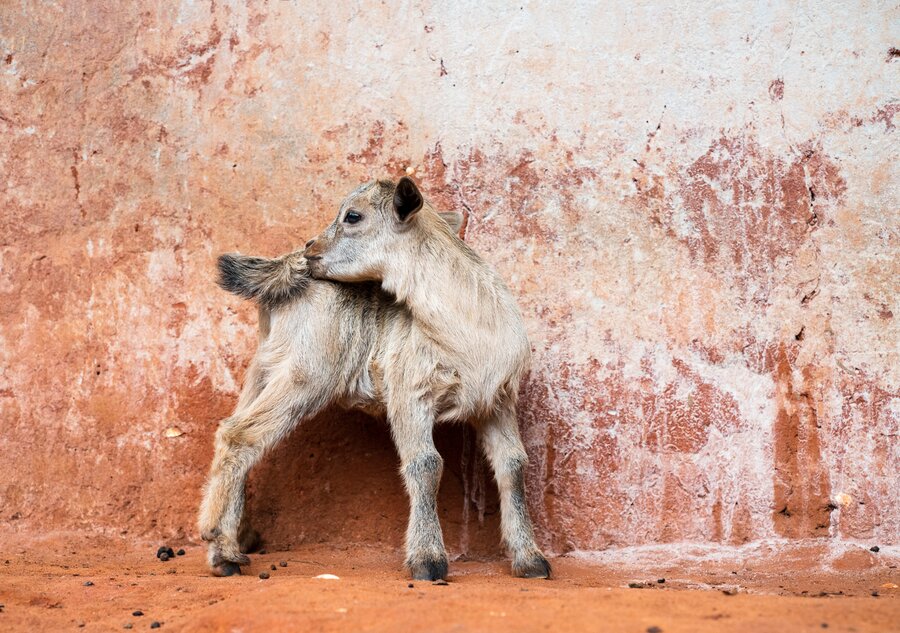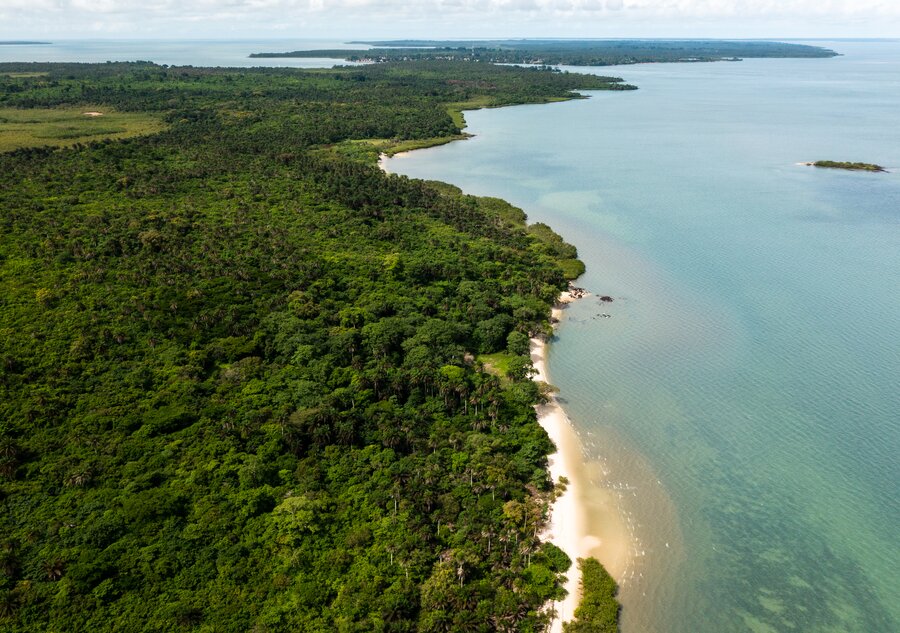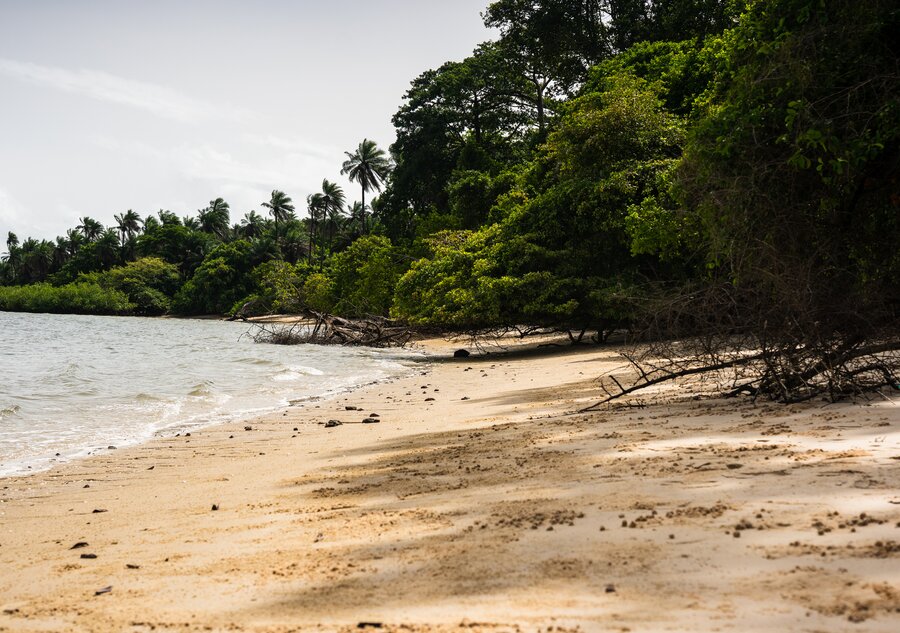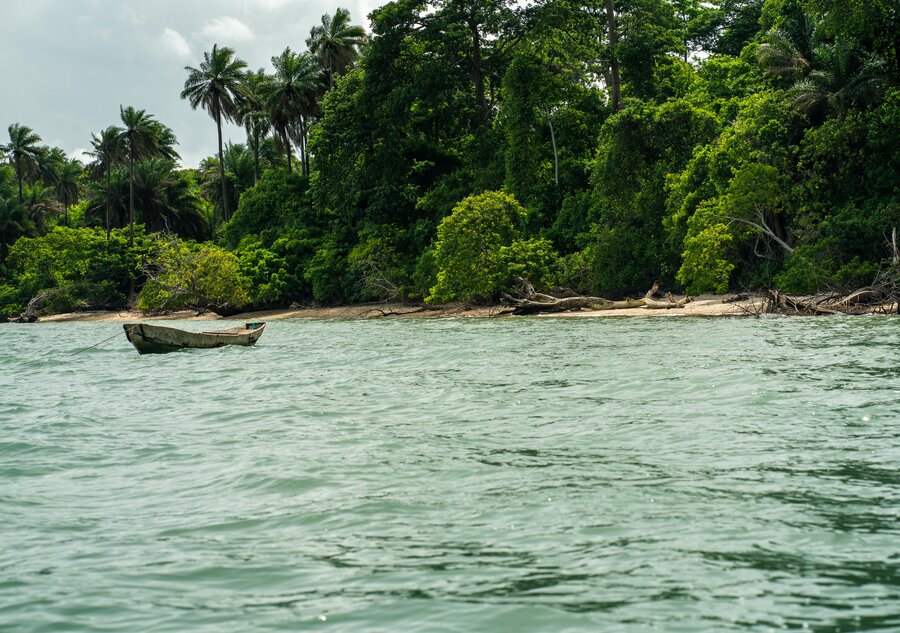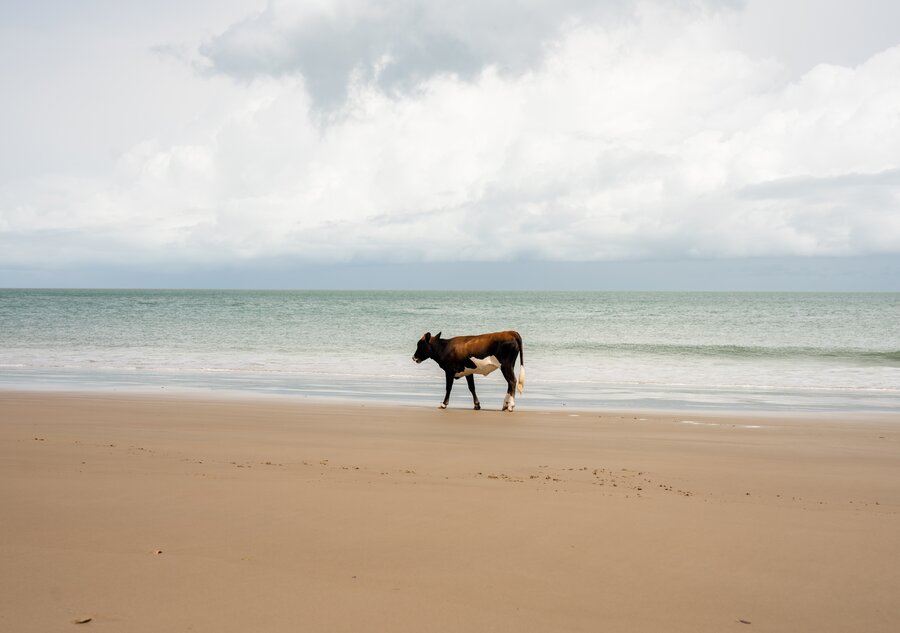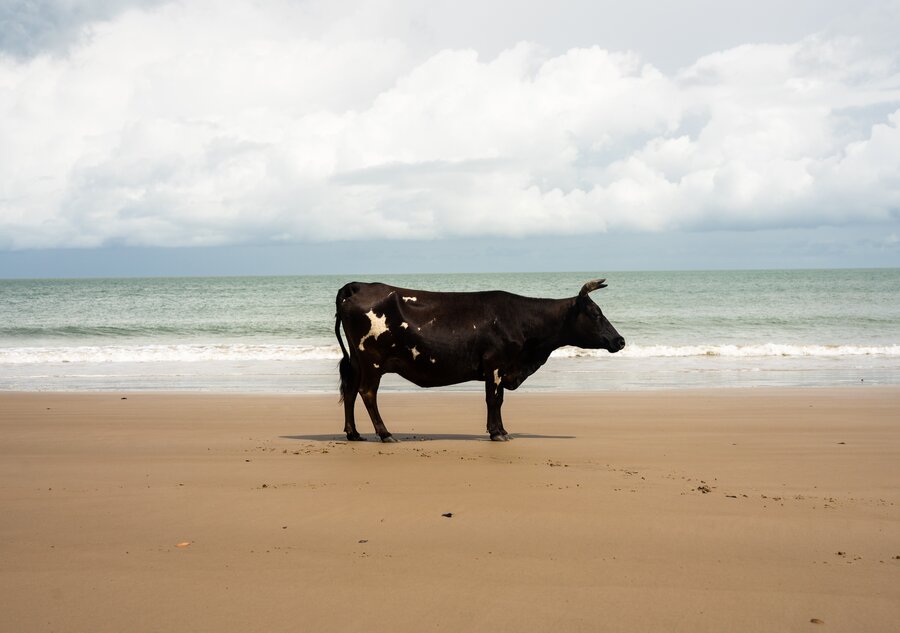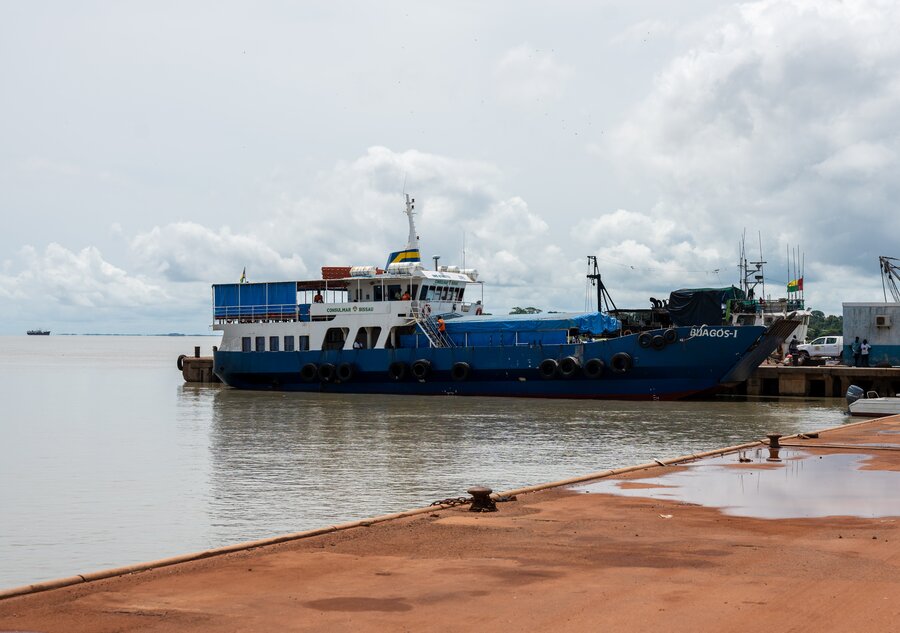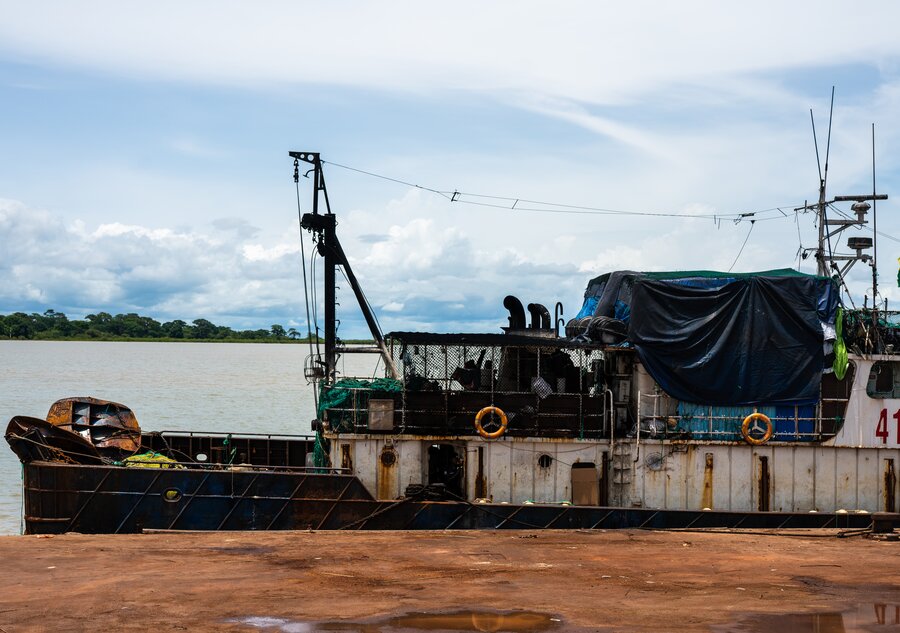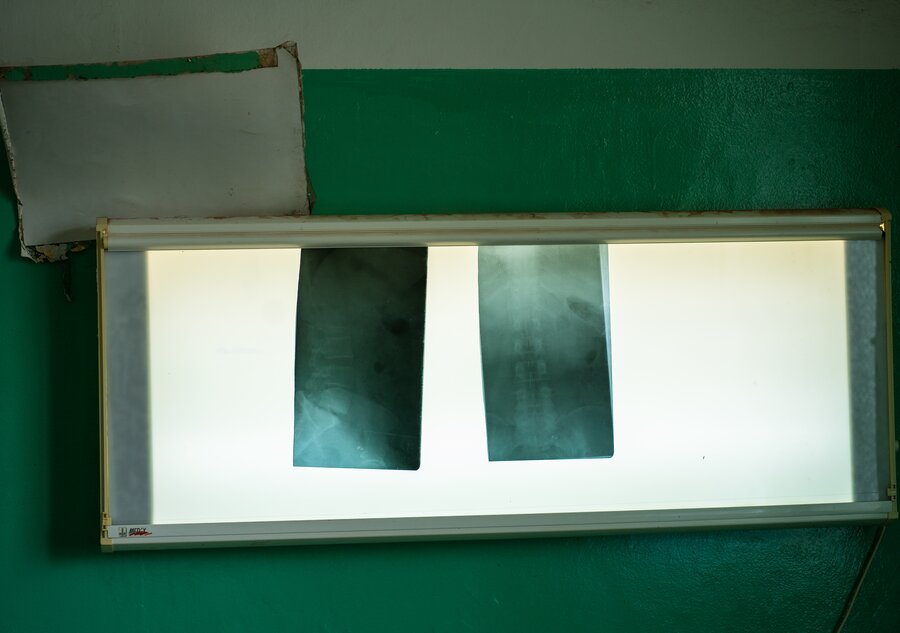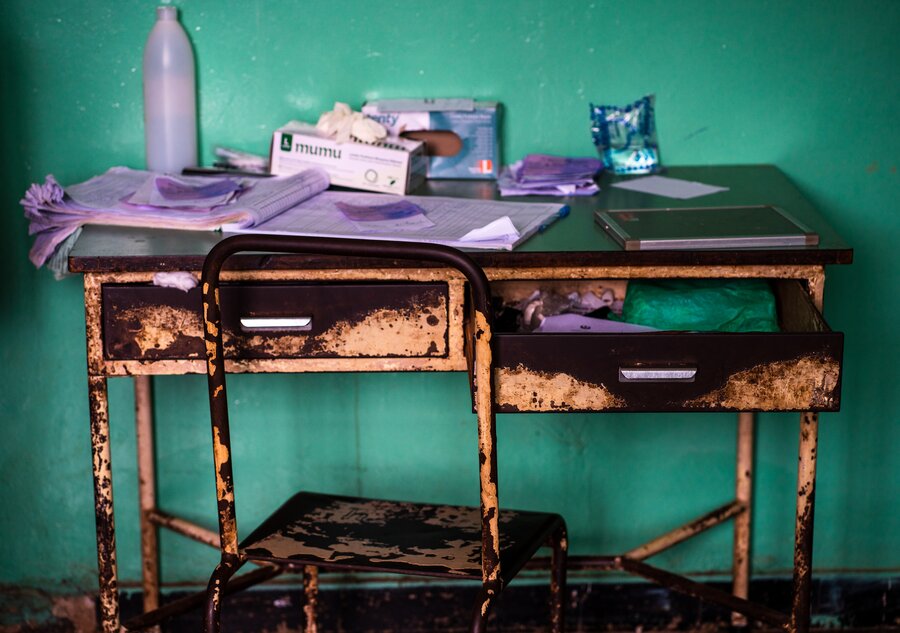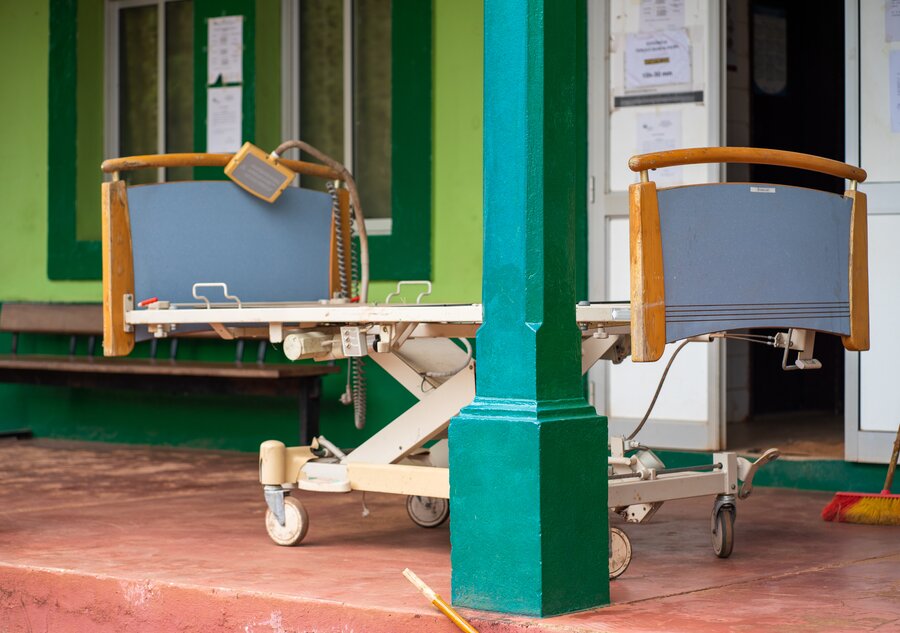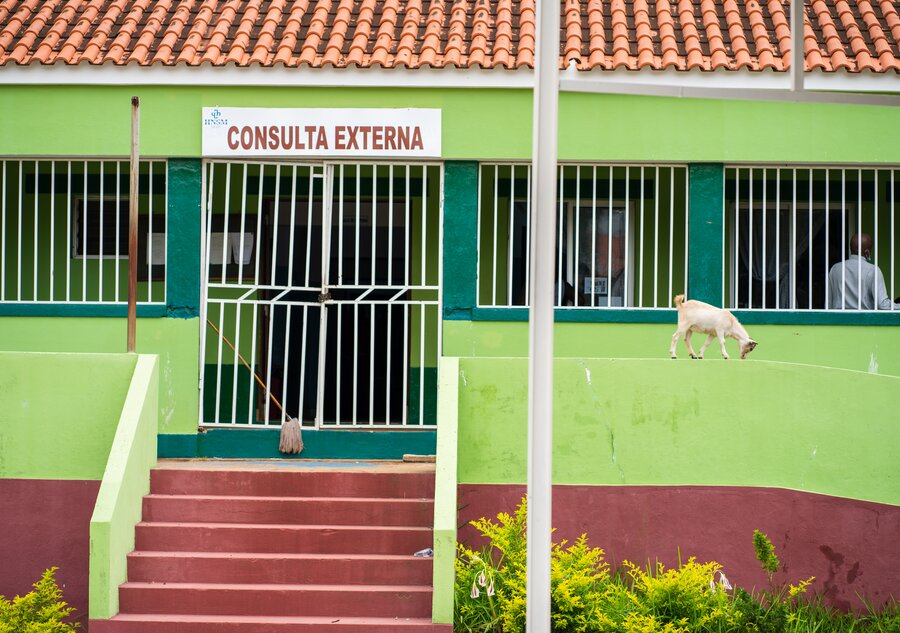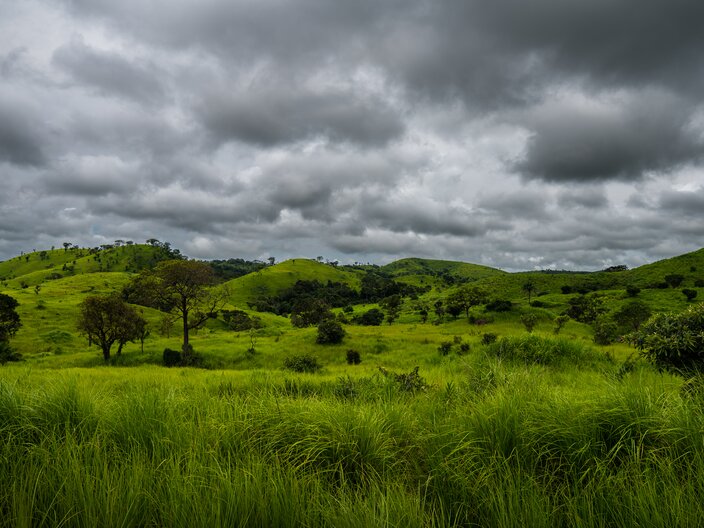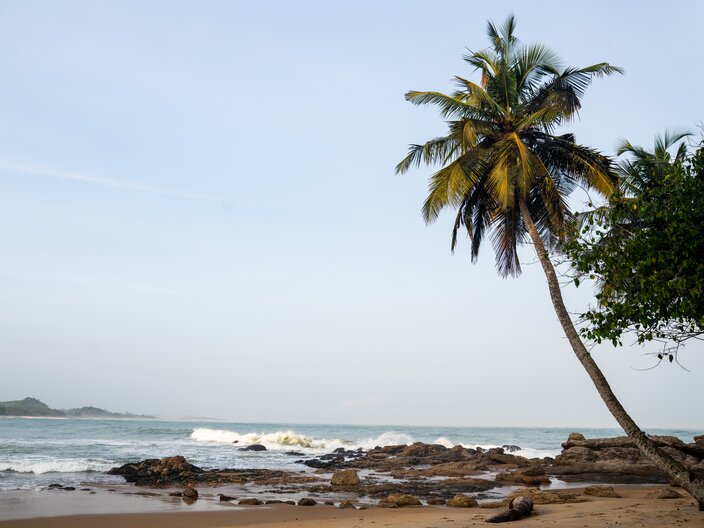Guinea-Bissau offers an incredible variety of landscapes. Roughly speaking, the country consists of two parts: the mainland and the Bijagos Archipelago, located off the coast of Bissau which include 88 islands. The seemingly endless fields of savannah, dotted with occasional trees, lie further back, and are gradually replaced by forests of tall trees. Some of the country's rivers create beautiful deltas near the coast and give rise to lakes in the rainy season. In the dry season, the lakes turn into large, moon-like expanses. During our time in country, the mainland was lush and green with large herds of cows grazing on the multitude of meadows. The herds were always cared for by young herders – and based on our observations, it was a job mostly assigned to the boys of local families. Many of the roads we travelled were neither paved nor asphalted - if they were, they were so pitted with enormous holes that we could not even call them roads. In fact, many roads in Guinea-Bissau are made up of are reddish-orange, compacted earth.
Guinea-Bissau
Before our trip, the only things we knew about Guinea-Bissau were from documentaries. It is one of the three countries that bears the moniker Guinea, and it is on our route. Portuguese, its official language, was our first linguistic challenge, as neither of us is proficient in that language. Within the first hours in the country, we noticed that it would no doubt be one of the poorest countries on our adventure. The roads were in disastrous condition and the settlements and houses we passed were very basic. On the other hand, in contrast to the countries we had visited previously, we found the police and military to be friendly and helpful. We were never asked for money and quickly realized that our well-being seemed to be important to everyone.
Landscape diversity
Arquipélago dos Bijagós
The Bijagos Archipelago consists predominantly of uninhabited islands. Some are inhabited b ancient tribes, whose only connection to the modern world is mobile phone antennas. The people on the islands still live in traditional huts and are led by a king. Some islands are part of a UNESCO biosphere reserve and are home to rare animal species such as hippos and turtles. Nature is diverse and essentially subtropical.
The main island, Bubaque is connected to the capital Bissau by two ferries. Depending on the season, you can travel to the individual islands of the archipelago by local pirogues. However, it is often not clear when exactly these pirogues operate, and travel requires a communiction with the locals.
We were able to visit two other islands in addition to the main island. On one of the islands, we visited a village and participated in a community meeting. These gatherings are governed by the same rules as they were hundreds of years ago. Each of the interest groups - the old, the young and the women are represented and allowed to voice their opinions on the topic under discussion. However, the king is still present as the most important decision-making authority. We got the chance to meet him and tried to communicate with him with hands and feet.
There are countless deserted beaches on the islands. We took the opportunity to visit some and surrendered to the beauty of nature. As on the mainland, cows can be found on some of the islands. Every evening, they leave the inland meadows and head for the beaches where they enjoy the evening setting sun - or so it seemed to us. We took lots of unique pictures of individual cows and whole herds on remote sandy beaches as they gathered around us.
Bissau - the capital
Bissau was the first city on our trip where we really felt at home. It is neither huge nor small and does not have a lot of traffic, which makes it seem quiet. The houses testified to a prosperous past and were painted in a riot of colors, which gave them a Caribbean feel. The streets are a nightmare with countless holes. The curiosity and admiration for Dötnius was enormous and offers to buy it literally flooded in, several times a day. This led to many exciting conversations and even more laughs. It is a city we will remember with pleasure.
visit of a hospital
By chance, we were able to visit the largest hospital in the country - we had met its director a few days prior for a medical check-up. He allowed us to tour the entire complex. All our questions were answered politely, which gave us a deep insight into the health care system in Guinea-Bissau. The basic structure of the entire facility is not much different from a hospital in our home country. It included an emergency, X-ray department, maternity ward, a pharmacy and much more. The big difference lies in the equipment of the individual departments, the financial means of the establishment and the resources available. The director spends most of his working time treating patients. Needless to say he has many other administrative responsibilities, however as there are simply not enough practicing doctors in the country to treat all the patients, his medical experience is relied on. This is just one example of the lack of resources. This visit touched us deeply and we were infinitely grateful for the openness that was shown to us.


